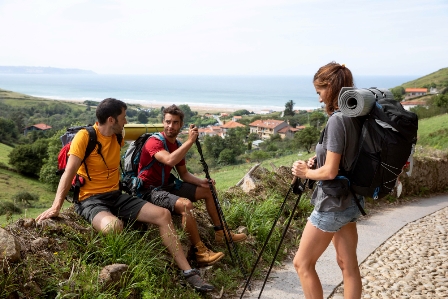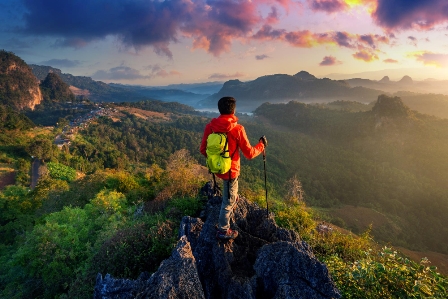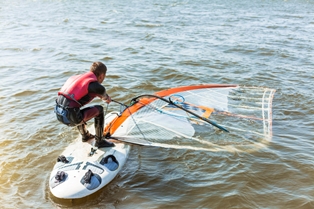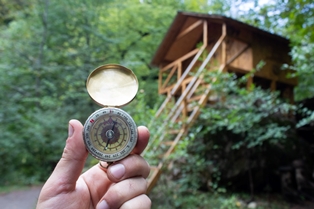Trek travel, a captivating blend of adventure and exploration, has gained significant popularity in recent years. This unique form of travel involves embarking on journeys through picturesque landscapes, often on foot, allowing travelers to connect with nature in a profound way. In this article, we delve into the world of trek travel, exploring its benefits, popular destinations, essential gear, safety measures, cultural experiences, and much more.
Benefits of Trek Travel
Trek travel stands as a gateway to a host of advantages, nurturing both physical and mental well-being. In this exploration, we uncover how the physical demands of trekking intertwine with the tranquility of nature, creating a unique and holistic approach to health.
Cardiovascular Health and Overall Fitness
Engaging in trek travel is akin to a comprehensive workout for the body. The physical exertion required to traverse varying terrains serves as an exceptional form of exercise, targeting multiple muscle groups and promoting cardiovascular health. Trekking, with its combination of uphill climbs and downhill descents, challenges the body, enhancing endurance and strength.
Stress Reduction
Nature’s therapeutic touch plays a pivotal role in stress reduction during trek travel. The serene surroundings, away from the hustle and bustle of daily life, create an environment conducive to relaxation. The rhythmic sounds of rustling leaves, flowing water, and the gentle hum of wildlife provide a natural soundtrack that eases the mind, offering a break from the stresses of modern living.
Improved Mental Health
Beyond stress reduction, trek travel contributes significantly to improved mental health. The rhythmic and repetitive nature of walking in nature has a calming effect on the mind, promoting mindfulness. The sense of accomplishment from conquering challenging trails releases endorphins, known as “feel-good” hormones, fostering a positive mental state.
Popular Trek Destinations
Some of the most sought-after trekking destinations include the majestic Himalayas, the challenging Appalachian Trail in the United States, and the historic Inca Trail in Peru. Each destination offers a unique trekking experience, from snow-capped peaks to dense forests and ancient ruins.
Choosing the Right Trek
Selecting the right trek is crucial for a satisfying experience. Considerations such as skill level, duration, and difficulty levels play a vital role. Novice trekkers may opt for shorter, less challenging trails, while seasoned adventurers might seek more strenuous routes.
Essential Gear for Trek Travel
Proper gear is essential for a successful trek. From reliable backpacks and daypacks to suitable footwear and clothing layers, being well-prepared ensures comfort and safety. Navigation tools, including maps and compasses, are indispensable for staying on course.
Safety Measures During Trek Travel
Ensuring safety during trek travel involves more than just physical preparation. Acquiring travel insurance, having emergency plans in place, and adopting an environmentally responsible mindset contribute to a secure trekking experience.
Cultural Experience during Trek Travel

One of the unique aspects of trek travel is the opportunity to immerse oneself in different cultures. Interacting with local communities, learning about their traditions, and participating in cultural activities enrich the overall journey.
Planning and Preparation Tips
Embarking on a trek is not just about putting one foot in front of the other; it’s a journey that begins long before the first step. Successful trek travel hinges on meticulous planning and thorough preparation. In this segment, we explore the essential tips for planning and getting ready for an enriching trekking experience.
Set Realistic Goals
Before lacing up those hiking boots, take the time to set realistic goals. Consider your fitness level, experience in trekking, and the duration of the trek. Setting achievable objectives ensures a more enjoyable experience without unnecessary physical strain.
Undergo Physical Training
Trek travel demands more from the body than casual strolls. Engage in a structured physical training routine that includes cardiovascular exercises, strength training, and endurance-building activities. This not only prepares your body for the rigors of trekking but also enhances your overall fitness.
Choose the Right Trail
Different trails cater to various skill levels. Research and choose a trail that aligns with your goals and abilities. Factors such as trail difficulty, altitude, and climate should be taken into account. Novice trekkers might opt for well-marked paths with moderate difficulty, while experienced adventurers may seek more challenging routes.
Create a Comprehensive Checklist
Packing is a critical aspect of trek preparation. Create a comprehensive checklist that includes essential gear such as backpacks, proper footwear, clothing layers, and navigation tools. Don’t forget items like a first aid kit, water purification tools, and energy-packed snacks. A well-prepared checklist ensures you have everything you need for a safe and comfortable journey.
Consider Environmental Impact
Responsible trekking involves considering the environmental impact of your journey. Pack light, minimize waste, and follow the principles of Leave No Trace. Be mindful of local flora and fauna, respecting the delicate balance of the ecosystem you are exploring.
Plan for Contingencies
No matter how well you plan, unexpected situations can arise. Have contingency plans for emergencies, including knowledge of evacuation routes, access to emergency services, and communication devices. Inform someone about your itinerary and expected return date.
Familiarize Yourself with Local Regulations
Different trekking destinations may have specific regulations. Research and familiarize yourself with local rules and guidelines, including permits and restricted areas. Adhering to these regulations ensures a smooth trek without legal complications.
Trek Travel and Sustainable Tourism
Embracing sustainable practices is crucial for the preservation of natural environments. Trekkers should be mindful of their ecological impact, minimizing waste, and supporting local economies to ensure a positive influence on the destinations they explore.
Challenges of Trek Travel
While trek travel is rewarding, it comes with its share of challenges. Unpredictable weather conditions, the risk of altitude sickness, and the physical demands of endurance can pose obstacles that trekkers need to navigate.
Photography and Documentation Tips
Capturing the breathtaking landscapes and memorable moments of a trek is an essential part of the experience. Tips on photography and documentation help trekkers preserve their memories and share their journeys with others.
Budgeting for Trek Travel
Understanding the costs associated with trek travel is crucial for effective budgeting. From transportation to accommodation and permits, considering all expenses helps travelers plan financially for their adventure.
Group vs. Solo Trekking
Choosing between group and solo trekking is a personal decision, each with its advantages and drawbacks. While group trekking offers camaraderie and shared experiences, solo trekking provides a more intimate connection with nature and self-discovery.
FAQs
Here are answers to some frequently asked questions about Trek travel
Trek travel, as a concept, doesn’t have a single attributed founder. The idea of trekking as a form of travel has evolved over time, with individuals and communities engaging in walking journeys for various purposes.
Trek is a well-known bicycle and cycling-related products manufacturer. They design and produce a wide range of bicycles, components, and accessories for cyclists of all levels and preferences.
Trek Bicycle Corporation is a privately-owned company. As of my last knowledge update in January 2023, the company was founded by Richard Burke and Bevil Hogg. However, for the latest ownership details, it’s recommended to check the most recent sources.
Trek is widely regarded as a reputable and high-quality brand in the cycling industry. They are known for producing durable and innovative bicycles, and many cyclists have positive experiences with their products.
Yes, Trek is an American brand. It was founded in Waterloo, Wisconsin, USA, and its headquarters are still located there. The company has a significant presence both in the United States and globally.
One of Trek’s major competitors in the bicycle industry is Giant Bicycles. Both companies are well-established and offer a range of bikes for various purposes. Other competitors include Specialized, Cannondale, and Scott, among others.
Conclusion
In summary, trek travel stands as a transformative odyssey, elevating the travel experience beyond the ordinary. The amalgamation of physical and mental benefits, coupled with the chance to explore diverse landscapes and immerse oneself in various cultures, renders trekking a truly enriching endeavor. As you contemplate your next travel adventure, let the allure of trekking be the catalyst that propels you into a journey promising more than mere destinations—a journey that fosters a profound connection with the world around you. Embrace the trails, breathe in the fresh mountain air, and let each step become a testament to the extraordinary experiences that await.





